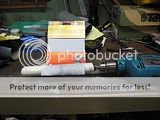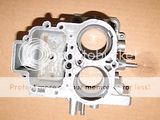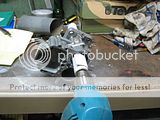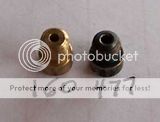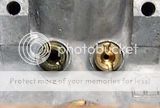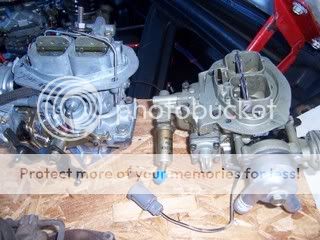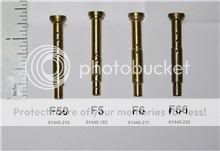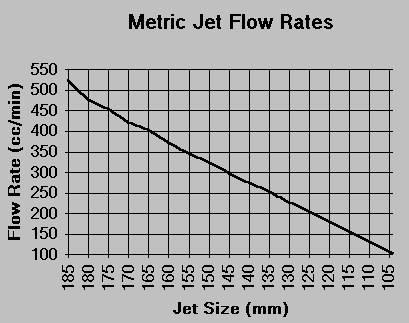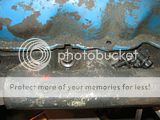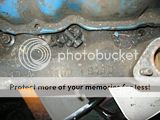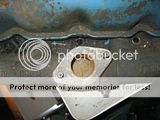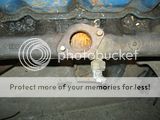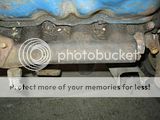powerband":19h5ufzq said:
On a fairly high CR 170, I used a generic 4cyl 5200 with all ranges of jetting with little improvement from the 1bbl until finding a 2800 V6 application H/W 5200 version. On the 170 six it improved performance and mileage dramatically . I can't account for differences even swapping same jetting between carb bodies 8) ... But as mentioned it is easy and fun to get the secondaries workin'.
That's because the emulsion tube is different. Remember, the 32/36 saw duty on 78 to 171 cube Ford engines from the 87 hp 1.6 liter SOHC Pinto engine found in European Cortinas, Carpis and Sierras, to the US 2600 and 2800 Cologne V6's in the Capri, Bronco II, Areostar. I think the ill fated 1978 to 1980 1600 Kent engined Fiesta ran one for the US market. Both the Weber and Holley Webers use F2 to F78 trim emulsion #61440 tubes, the F50 primary, F6 sec for water or electric choke, F50/F50 for earlier manual choke , but some used for the 171 cube/2800 cc Cologne V6 had F2's in the secondary, and there are other differences to air bleeds. Emission gear forced Ford to adopt different jetting depending if it was Austria, Australia, California or Illonis

. The numbers are just list numbers, but generally, the higher the number, the less the emulsification, the smaller the holes. Low numbers suit bigger engines, generally. Here are the F1 to F20's,with an F8 below. The ink pictures are for #61450 series carbs, but you get the general idea.
http://farm5.static.flickr.com/4101/480 ... c46a_z.jpg
http://farm5.static.flickr.com/4098/480 ... fa40_z.jpg
From swatson454 on speed talk, there are pictures of the normal #61440 series F50, then an F6, an F7, and then a custom moded F7 item. Lastly, some common 32/36 Emulsion tubes from uptillnow
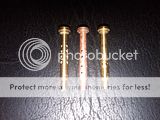
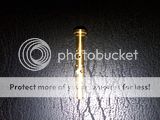
Easy replacements that will fit the 32/36 are F3, 5, 6, 7, 24, 25, 26, 50, 66 and 78. F2's are not commonly available but have been used in 2.8 2-bbl's , while F6's and F66's are other common replacements.
Some Holley Weber 5200 and Weber 32/36 carbs have only a primary idle system, while others have both primary and secondary idle system. These 3 things totally change the make up of any 32/36 or 5200 carb. Every year, there were major changes to carb calibration, and running changes as well. Always without notice...
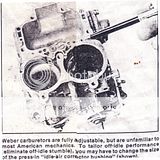
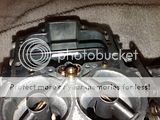
powerband":19h5ufzq said:
Main Jet Conversions
Green Jets Brass Jets Green Jets Brass Jets
124-227 22R-103-130 124-325 22R-103-150
124-239 22R-103-132 124-346 22R-103-155
124-243 22R-103-133 124-357 22R-103-157
124-255 22R-103-135 124-374 22R-103-160
124-263 22R-103-137 124-404 22R-103-165
124-275 22R-103-140 124-423 22R-103-170
124-283 22R-103-142 124-455 22R-103-175
124-299 22R-103-145 124-477 22R-103-180
124-311 22R-103-147 124-524 22R-103-185
The above are close limit jets
Or the chart that shows all them ploted
And specifically:The earlier standard jet sizes for Holley Webers are:-
103 cc/min=105 microns, or 41.34 thou
128 cc/min=110 microns, or 43.31 thou
152 cc/min=115 microns, or 45.28 thou
178 cc/min=120 microns, or 47.24 thou
201 cc/min=125 microns, or 49.21 thou
225 cc/min=130 microns, or 51.18 thou
251 cc/min=135 microns, or 53.15 thou
275 cc/min=140 microns, or 55.12 thou
298 cc/min=145 microns, or 57.09 thou
325 cc/min=150 microns, or 59.06 thou
346 cc/min=155 microns, or 61.02 thou
375 cc/min=160 microns, or 62.99 thou
400 cc/min=165 microns, or 64.96 thou
425 cc/min=170 microns, or 66.93 thou
450 cc/min=175 microns, or 68.90 thou
475 cc/min=180 microns, or 70.87 thou
525 cc/min=185 microns, or 72.83 thou

